Circular economy: Key to a sustainable future

The circular economy is a model that seeks to minimize waste and maximize the use of resources through reuse, recycling, and repair. Unlike the linear economy, it focuses on extending the shelf life of products. This approach has multiple benefits, highlighting the reduction of waste and the positive impact on the environment. Its application extends to various sectors, promoting a change towards more sustainable development.
Circular economy: definition and key concepts
The circular economy model transforms the way products and resources are conceived and managed. This approach focuses on sustainability and the durability of materials over time.
Differences between circular and linear economy
The linear model is based on the ‘take, make, dispose’ cycle, where resources are extracted, turned into products, and finally disposed of as waste. In contrast, the circular economy seeks to:
- Waste reduction through reuse and recycling.
- Maximization of the use of materials throughout their life cycle.
- Creation of a sustainable system that minimizes environmental impact.
Components of the circular model
The circular economy is based on several essential principles that guide its implementation:
- Reuse: Extending the life of products through repair and prolonged use.
- Recycling: Processing waste to recover materials and transform products into new resources.
- Refurbishment: Redesign products to facilitate disassembly and recovery of components.
- Eco-efficiency: Optimising the use of resources and energy during production.
Benefits of the circular economy for the environment
The circular economy has multiple benefits for the environment. This sustainable approach seeks to reduce the negative impact of human activities on the ecosystem and optimize the use of natural resources.
Waste reduction and sustainable management
One of the main benefits is the notable reduction in waste. With the circular economy, reuse and recycling are promoted, which contributes to more efficient waste management. This leads to:
- Minimizing waste in landfills
- Reduced soil and water pollution
- Better utilization of existing resources
Impact on natural resources
The implementation of the circular economy allows for a more rational use of natural resources. This model not only decreases the extraction of new materials, but also promotes:
- Recycling materials to extend their life cycle
- Energy savings by reducing the need for new production
- Preservation of ecosystems by limiting the exploitation of resources
Reduction of greenhouse gases
Another key aspect is the reduction of greenhouse gas emissions. The circular economy encourages practices that involve:
- Less energy used in the manufacture of new products
- Reduction of the carbon footprint associated with waste management
- Developing innovative, low-impact solutions
Examples of circular economy in practice
The implementation of the circular economy is manifested in various initiatives throughout Europe, highlighting effective practices that seek sustainability and the optimization of resources.
Industrial sectors with effective implementation
Various sectors are leading the way towards a more circular economy. Among them are:
- Textile: Companies that promote the recycling of garments and the use of biodegradable materials.
- Construction: Projects that use recycled materials and techniques to reduce waste on construction sites.
- Food: Initiatives to minimise food waste by reusing surpluses in new products.
Successful initiatives at European level
In Europe, several programmes have demonstrated the effectiveness of the circular economy. Examples include:
- Recycling projects in the Netherlands: Where a system has been established that allows practically all materials to be recycled.
- Sustainable mobility initiatives in Denmark: Encouraging the use of bicycles and electric vehicles, as well as the recycling of car parts.
- Reuse programs in Sweden: Creating platforms to exchange goods and materials between citizens, reducing the need to produce new ones.
Companies and ventures in the circular economy
The circular economy has gained strength in the business world as an effective strategy to improve sustainability. More and more companies are adopting this model, generating a positive impact on both the environment and their profitability.
Success stories in Spain
In Spain, several companies have implemented successful circular economy practices, demonstrating that this model is not only viable, but also beneficial. Some prominent examples are:
- Ecoembes: This company focuses on the management of packaging waste, promoting recycling and environmental education.
- Recyclia: A group that encourages the recovery of electronic waste, contributing to the reduction of hazardous waste.
- Estrella Dam: This brewery has promoted initiatives to reduce its ecological footprint by using local ingredients and recycling its products.
Business innovation and job creation
The transition to the circular economy has also stimulated innovation in the private sector. Companies are adopting more sustainable technologies and improving their processes to optimize the use of resources. This not only reduces costs, but also creates new job opportunities.
Initiatives such as product reuse, repair and recycling have led to an increase in the demand for skilled personnel. According to estimates, thousands of new jobs can be reached in various areas, from research to logistics, driven by this new economy.
Role of the European Union in promoting the circular economy
The European Union plays a crucial role in implementing the circular economy through comprehensive policies and strategies.
European Action Plan 2050
The EU is committed to making Europe a climate-neutral continent by 2050. To achieve this, an action plan has been developed that includes:
- Promote sustainability in product design.
- Improve waste management and promote effective recycling.
- To encourage innovation through research and development.
This approach is designed to transform the current economic system, moving towards a model that prioritizes the preservation of resources and the reduction of waste.
Relevant legislation and measures taken
The EU has implemented several regulations to support the circular economy. Some of these include:
- Ecodesign and resource efficiency directives.
- Regulations that set targets for waste management and plastic reduction.
- Incentives to improve recycling and reuse of materials.
These actions confirm the European Union’s commitment to a sustainable economic model, which seeks not only to protect the environment, but also to boost economic growth.
Challenges and opportunities for the transition to a circular economy
The transition to a circular economy model presents multiple challenges and opportunities for companies, governments and citizens. A collective commitment is required to overcome existing barriers and reap the benefits that this approach offers.
Economic and financial challenges
Among the main challenges facing the transition are:
- Initial investments: Adopting sustainable practices often involves considerable spending on infrastructure and innovative technologies.
- Access to finance: Businesses, especially small and medium-sized ones, may find it difficult to access financial resources to implement necessary changes.
- Economic risks: Uncertainty in the return on investment can generate distrust towards the adoption of new circular practices.
Cultural and consumer changes
In addition to economic challenges, cultural changes are critical to achieving success in the circular economy:
- Awareness: It is essential to increase understanding of the benefits of the circular economy among consumers and businesses.
- Habit adaptation: Changing consumer behaviors, prioritizing reuse and repair over the purchase of new products, is a significant challenge.
- Education: Fostering an education that promotes sustainability and social responsibility is vital to motivating change.
Policies and strategies in Spain to promote the circular economy
Spain has developed a framework of policies and strategies that seeks to strengthen the circular economy in the country. These initiatives are essential to encourage a more sustainable use of resources.
Spanish Circular Economy Strategy 2030
The Spanish Circular Economy Strategy 2030 establishes a comprehensive approach towards sustainability and the efficient use of resources. This strategy includes several key objectives, including:
- Reduction of material consumption by 30% compared to GDP.
- Reduction of waste generation by 15%.
- Increase in the reuse of municipal waste by up to 10%.
- Improved efficient water use by 10%.
- Reduction of greenhouse gas emissions to less than 10 million tonnes of CO2 equivalent.
Tax support programs and incentives
To foster the transition to a circular economy, the Spanish government has implemented a number of support programmes and fiscal measures. These initiatives aim to facilitate investment in sustainable practices and promote innovation. Some of the programs include:
- Subsidies for sustainability research projects.
- Tax incentives for companies that adopt circular practices.
- Training and education in circular economy for SMEs.
These policies and programmes reflect Spain’s commitment to sustainability and its intention to lead the transition to more sustainable economic models.
Are you looking for an efficient and sustainable solution for waste recycling? At Reverter Industries, we offer recycling plants designed with advanced technology to optimize material treatment and maximize resource recovery.





